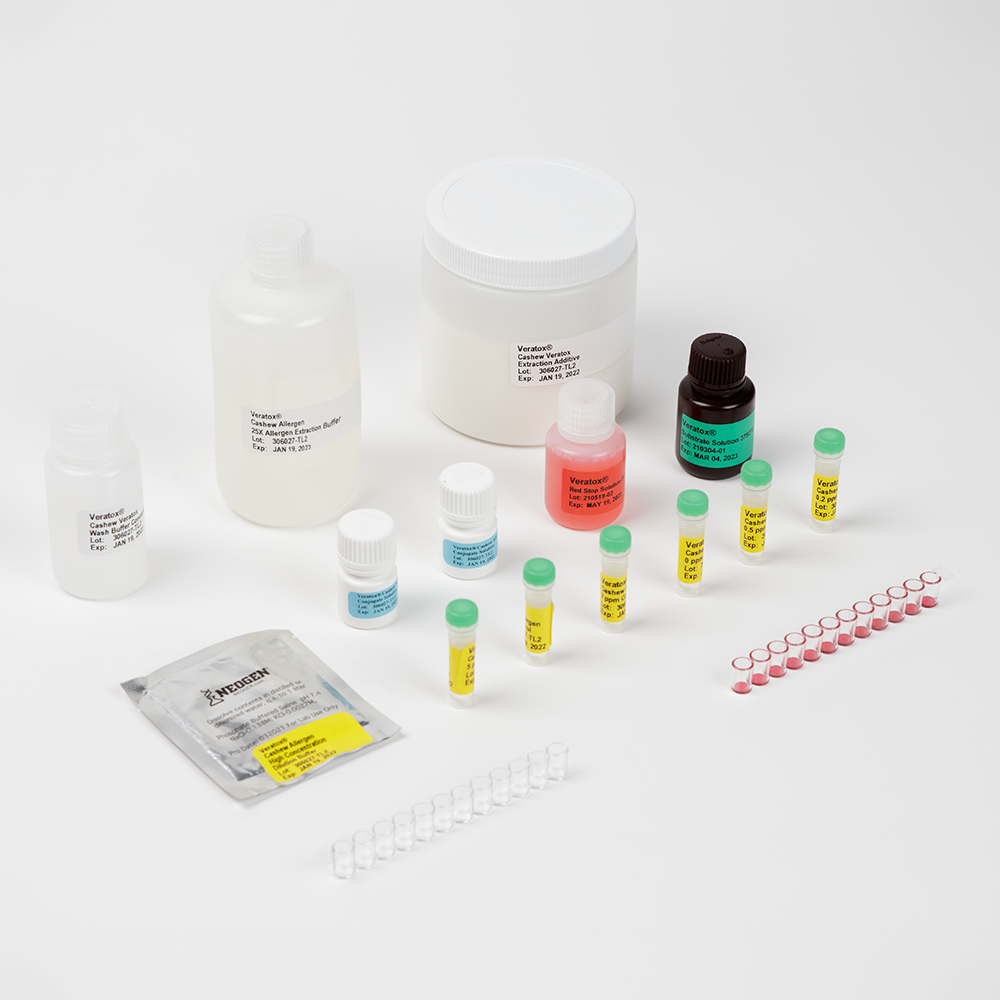Veratox® VIP for Cashew
SKU N° 700002605 | Numéro de catalogue 8570
- Features an optimized antibody combination and extraction procedure for high specificity to all types of cashew protein, particularly further-processed cashew.
- Highly sensitive, quantifying cashew protein down to 0.2 ppm, aligned with most up-to-date industry guidelines.
- Rapid and easy to use, with a 30 minute time to result, a simple testing procedure consistent across sample types, and ready to use, non-hazardous reagents.
QTÉ:
Quantité minimale requise : 1
Pour cet article, la quantité commandée doit être un multiple d’une boîte. Quantité par boîte : 1
| Spécifications | ||
|---|---|---|
| Marque | Veratox® | |
| Analyte | Noix de cajou | |
| Plateforme | ELISA | |
| Type de résultat | Quantitatif | |
| Limite de détection | 0.03 ppm | |
| Plage de quantification | 0,20 parties par million - 5,00 parties par million | |
| Délai avant résultat | 30 Minutes | |
| Conditions de stockage | Store refrigerated | |
| Quantité par paquet | 48 tests | |
| Dimensions du paquet | 10,50 pouce x 8,00 pouce x 2,80 pouce | |
| Poids du paquet | 1,10 Livres | |
Informations supplémentaires
A Guide to Risk Assessment Using Food Allergen Reference DosesDocuments
Pour accéder au certificat d’analyse (CA), veuillez utiliser notre Recherche CA.
Technologie
The Veratox VIP for Cashew test is a sandwich enzyme-linked immunosorbent assay (S-ELISA). This assay is validated to low levels of cashew. Cashew protein is extracted from samples with a buffered salt solution by shaking in a heated water bath, followed by centrifugation or filtration. Extracted peanut protein is sampled and added to antibody-coated wells (capture antibody), where it binds to the antibody during an incubation. Any unbound peanut protein is washed away and a second antibody (detector antibody), which is enzyme labeled, is added. The detector antibody binds to the already bound cashew protein. After a second wash, substrate is added. Color develops as a result of the presence of bound detector antibody. Red Stop Solution reagent is added and the color of the resulting solution is observed. The test is read in a microwell reader to yield optical densities (OD). The OD of the controls form a standard curve, and the sample OD are plotted against the curve to calculate the concentration of cashew protein.
Formation
Our customers’ success is our shared success. Our experts are ready to train you and your team on our solutions, so you can rest easy knowing procedures are performed properly and yield accurate results. In addition, we provide certificates upon completion of training to provide you with the documentation needed for audit traceability.
